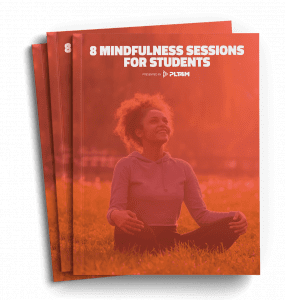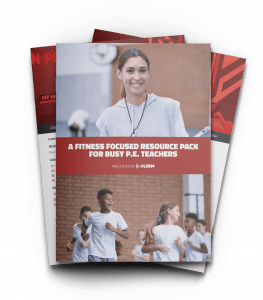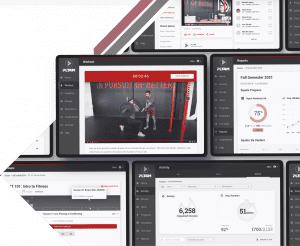Mental health activities for high school students can take form in many ways. They can be explicit conversations around things like anxiety and depression. But they can also be implicit activities that support mental health, like physical activity. This article will explore a mix of both for schools to support student mental health.
Preventative Approach To Student Mental Health
It is no secret that student mental health is a growing problem in our country. Even students themselves know just how big of a problem it is. Over 70% of teenagers cited anxiety and depression as the number one issue affecting their peer group.
But we have typically taken a reactive approach to mental health. While things like the Safer Communities Act have put money and resources towards more school counselors and mental health professionals in schools, we still have work to do. Often, many students only access mental health services as a reactive measure.
Mental health activities for high school students shouldn’t be limited to individuals experiencing immediate mental health problems. Instead, mental health activities for high school students should be available to everyone. For example, it can be a part of the curriculum and school hours for all students.

Explicit Mental Health Activities For High School Students
There are many explicit ways that mental health activities for high school students can be implemented. To start, open up the conversation with students.
Mental health has often been seen as taboo in our culture. As a result, we only talk about mental health behind closed doors. However, we can change how we perceive mental health by having open and honest conversations about mental health.
Everfi, a leader in health and wellness, suggests a great place to begin with mental health activities for high school students is starting a dialogue,
“Before diving into a lesson about mental health basics, ask your students questions like, “How is mental health currently perceived in the United States?” or “How can mental health awareness impact your school?”.
By starting with an open conversation, we begin to remove the stigma around mental health and create a safe space for dialogue. If you think a free-flowing discussion might be too much of a crash course, one of the best units to incorporate is mindfulness lesson plans for high school students.
Mindfulness Mental Health Activities For High School Students
Mindfulness is one of the most popular social-emotional learning units that promote mental health awareness. Through mindfulness, students can learn key concepts about their mental health and develop skills to help support their well-being.
One example of a mindfulness mental health activity is the act of labeling emotions. Students experience different emotions like anxiety, stress, joy, and excitement but do not know why they feel that way. And students need to learn how to identify emotions to begin to address them.
Below is an example lesson where mindfulness instructor Meghan Leighton helps students label and identify the feelings around different emotions.
Today we focus on ‘letting be’ and mindfulness of emotions. Emotions can be described as energy in motion.
There are so many different ways to feel an emotion. There are so many ways to describe an emotion. We can feel so many kinds of emotions all in one single day. Happiness, stress, boredom, nervousness, stress, love, silliness, the list goes on.
When we can open up and allow whatever feeling it is, we can allow that energy or emotion to take its natural course. In this letting be, emotions will arise, and we can recognize them and allow them to be, rather than resisting them.
For so many of us, we don’t want to feel certain things. But in that resistance, we end up creating more of what we don’t want. What we resist, persists.
With mindfulness, we can open up to our experiences and notice how we feel. Remember, mindfulness is paying attention in the present moment on purpose with kindness and curiosity. Emotions are happening in the present moment. So we can be with those moments with kindness and curiosity, but it takes practice.
Labeling Emotions:
How do you feel when you see or hear different emotions listed. Try it out here. Notice how you feel the different emotions in your body:
1) Happiness
2) Sadness
3) Fear
4) Gratefulness or thankfulness
5) Peace
6) Boredom
7) Love
8) Surprise
9) Jealousy
10) Joy
You may have noticed that you feel these different emotions in different parts of your body or mind. For example, with gratefulness or thankfulness, you might feel it in your heart. Where with sadness, you might feel a drop in your belly.
With mindfulness, we can notice these emotions, and it can be helpful to pause and recognize what it is. You can even label it. Rather than pushing it away, you can let it be and welcome whatever is here.
Let’s take a look at this poem together and talk briefly about its relation to the mindfulness of emotions.
The Guest House – Rumi
This being human is a guest house.
Every morning a new arrival.
A joy, a depression, a meanness,
some momentary awareness comes
as an unexpected visitor.
Welcome and entertain them all!
Even if they’re a crowd of sorrows,
who violently sweep your house
empty of its furniture,
still, treat each guest honorably.
He may be clearing you out
for some new delight.
The dark thought, the shame, the malice,
meet them at the door laughing,
and invite them in.
Be grateful for whoever comes,
because each has been sent
as a guide from beyond.
In this poem, Rumi talks about welcoming emotions in our bodies. That is mindfulness in being open and receptive to what is here.
And while labeling emotions is an excellent mental health activity for high school students, there are endless other mindfulness lesson plans that can support the mental health mission.
Mindfulness Mental Health Lesson Pack!
Want to add mindfulness to your curriculum but not sure where to start? Download our PDF and get access to 8 follow-along sessions with PLT4M’s mindfulness team.
Implicit Mental Health Activities For High School Students
While there are many different mental health activities for high school students, it is essential to address the other activities that can promote mental health. You can undoubtedly tackle mental health head-on, and you should. But there are many implicit mental health activities for high school students.
Although they might not be labeled as mental health, they can still serve and support students’ overall well-being. For example, consistent and quality physical activity is one of the best implicit mental health activities for high school students.
To quote Paul Reed, MD, Rear Admiral, U.S Public Health Service, “What is good for the body, is good for the mind.” He goes on to reference the multitude of proven linkages between physical activity and mental health,
“Physical activity has many well-established mental health benefits. These are published in the Physical Activity Guidelines for Americans and include improved brain health and cognitive function (the ability to think, if you will), a reduced risk of anxiety and depression, and improved sleep and overall quality of life. Although not a cure-all, increasing physical activity directly contributes to improved mental health and better overall health and well-being.”
So yes, while it is not a cure-all for mental health, it can help. We should and can open dialogues and foster meaningful conversations, but let’s keep sight of the simple things. Simple activity and exercise are some of the best mental health activities for high school students. On top of that, physical education teachers and other educators can help students draw connections between physical activity and mental health, promoting a deeper understanding of what impacts mental health.
Free Fitness Lessons For P.E. Classes
Need activities and lesson plans to promote physical activity for students? Download 15 free fitness and physical activity lesson plans.
Key Takeaways on Mental Health Activities for High School Students
It takes a coordinated and comprehensive approach to support student mental health. The Whole School Model encourages schools to take a big-picture look at student health and wellness. A key component is the mental health of students.
If we want students to be successful in and out of the classroom, we need to create resources and activities that support students’ mental health. We can genuinely support students by opening up conversations, supporting the whole student, and implementing many mental health activities for high school students.
Most importantly, we should make activities available to all students. Yes, better support networks for students experiencing immediate mental health problems. But long term, we can better address student mental health by creating opportunities for everyone.
Ready to Learn More?
Schedule a free 10 minute consultation to see how the PLT4M system can help save you time, and empower student wellness.










